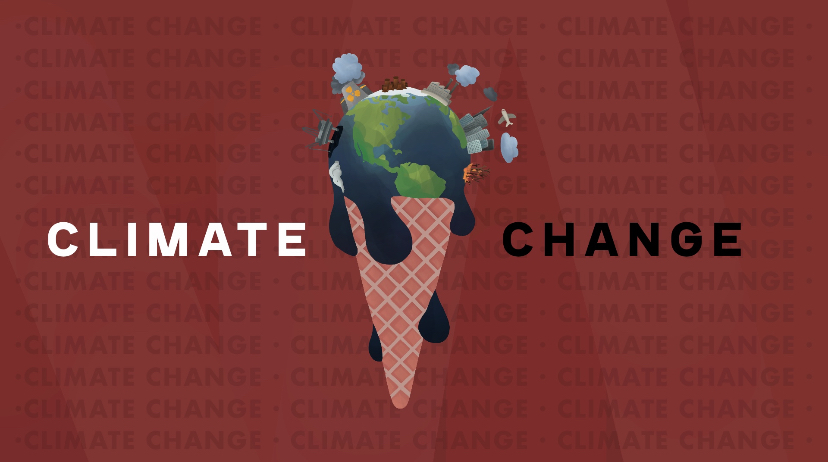The Earth’s Slow Death

Picture this. It is 9 am. On your way to school, you get stuck in traffic. Oh, let’s add to that the fact that your car’s air conditioner keeps blowing a mixture of hot and cold air, oh and your windows are not tinted.
Other than the fact that you are pretty annoyed by cars swerving in and out of lanes and might be a little late to school, you should be ok. But you are not ok. It is 2022 and the sun rays burn your skin. The heat is almost unbearable and your back is drenched in sweat. It is only 9 am and you ask yourself, “why is it so hot?” The answer to that is climate change.
According to the Merriam-Webster dictionary, climate change is “a significant and long-lasting change in the Earth’s climate and weather patterns.” These shifts may be natural, such as through variations in the solar cycle. But according to the United Nations (UN), “since the 1800s, human activities have been the main driver of climate change. Many people think climate change mainly means warmer temperatures. But temperature rise is only the beginning of the story.”
There are many causes of climate change. The UN states that “the manufacturing industry is one of the largest contributors to greenhouse gas emissions worldwide.” The manufacturing industry contributes to climate change when they produce fossil fuel emissions to produce goods. Deforestation is another leading cause of climate change. When trees are cut, they release the carbon they have been storing. Since forests absorb carbon dioxide, destroying them also limits nature’s ability to keep emissions out of the atmosphere.
According to the UN, “deforestation, together with agriculture and other land use changes, is responsible for roughly a quarter of global greenhouse gas emissions.”
The UN also said that transportation is a major contributor to greenhouse gasses, especially carbon-dioxide emissions. “Transport accounts for nearly one quarter of global energy-related carbon-dioxide emissions.”
Producing food, powering buildings, consuming too much at home, and generating power are also among the leading causes of climate change.
Over the course of the years, climate change has resulted in various disasters. The UN reports that over the course of the last decade, our temperatures have increased every year. “The last decade, 2011-2020, is the warmest on record. Since the 1980s, each decade has been warmer than the previous one.” Warmer temperatures mean more heat-related illnesses, and wildfires start more easily with these hotter temperatures.
According to NASA’s Global Climate Change, “The Intergovernmental Panel on Climate Change (IPCC)’s Sixth Assessment report, published in 2021, found that human emissions of heat-trapping gasses have already warmed the climate by nearly 2 degrees Fahrenheit (1.1 degrees Celsius) since pre-Industrial times (starting in 1750). The global average temperature is expected to reach or exceed 1.5 degrees C (about 3 degrees F) within the next few decades.”
But climate change is more than just that. Some of the effects of climate change are, more severe thunderstorms, increased droughts, loss of species, not enough food, increased famine and poverty, and a warming rising ocean.
In a 2006 documentary, An Inconvenient Truth by Al Gore, the recorded Carbon Dioxide(CO₂) concentration in the atmosphere was 400 parts per million (ppm). NASA’s Global Climate Change site Carbon Dioxide | Vital Signs – Climate Change reports that the latest CO₂ concentration as of July 2022 is at 419 ppm.
Al Gore also predicted that in the next decade, 40% of people would face a shortage of water. A report by world wildlife reports that “Today, 41% of the world’s population lives in river basins that are under water stress.”
To every problem, there is almost always a solution. According to the United Nations, “To preserve a livable climate, greenhouse-gas emissions must be reduced by half by 2030 and to net zero by 2050.” There is still time to act, but not much time.
The UN gives us some tips and actions that we can do to help reduce Greenhouse gas emissions. Some of these actions are to reduce the energy you use at home, switch to an electric vehicle, walk, bike or take public transport when possible, choose eco-friendly products, change the energy source at home and reduce, reuse, repair and recycle.
Not everyone can take part in all these actions, but consider at least one and see how you can help preserve a livable climate. For more information on climate change or to see more ways you can help regulate climate change, visit https://www.un.org/actnow.








